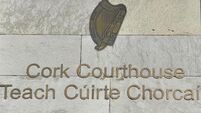Japan nuclear crisis second most serious in history
The Radiological Protection Institute of Ireland has upgraded the severity of the situation at the stricken nuclear plant in Japan.
The RPII today said the incident at Fukushima nuclear facility is the second most serious accident in history after Chernobyl.














